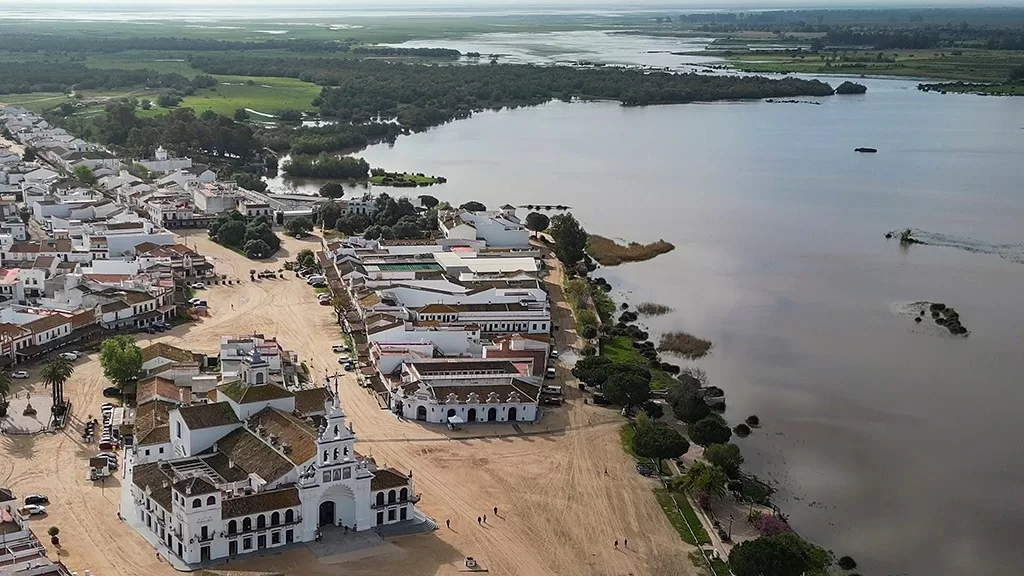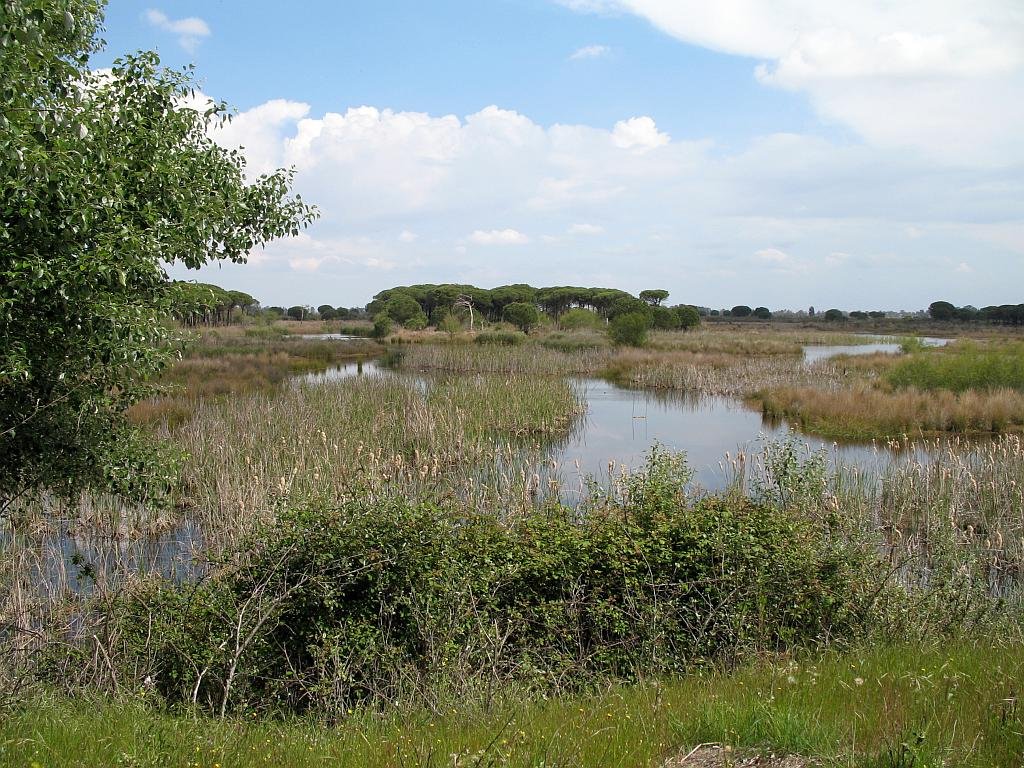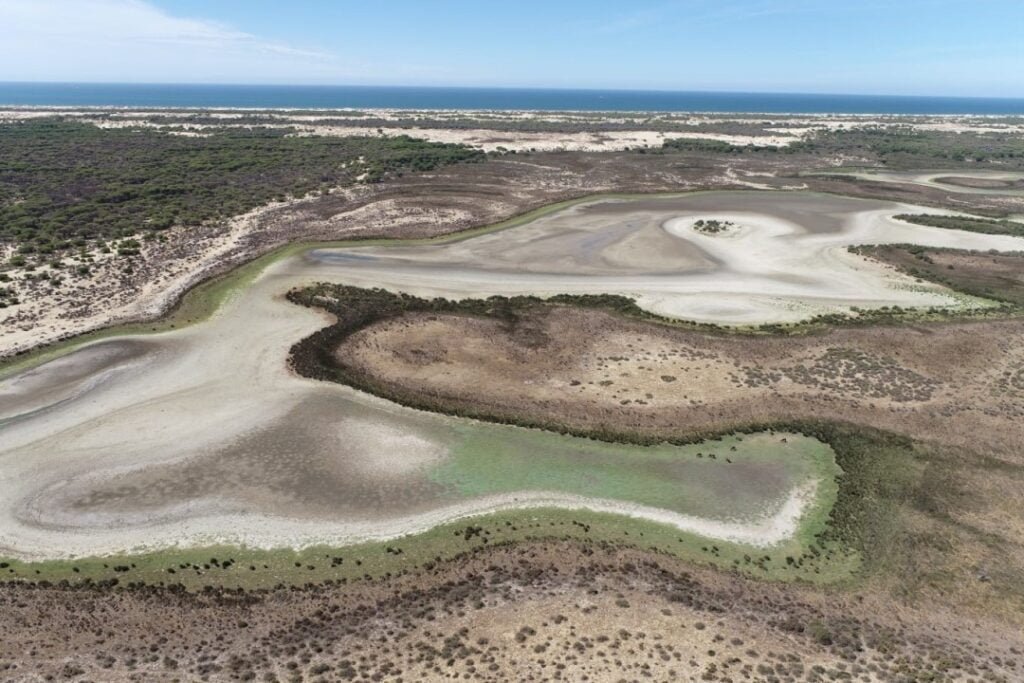A Rare Spring Transformation
Doñana National and Natural Park is bursting with life this spring, thanks to a season of heavy rains. The once-parched marshlands have returned to their former glory, offering a rare spectacle of biodiversity and a glimpse of the wetland’s ecological potential. This resurgence has flooded over 39,000 hectares, transforming the landscape and reminding us why Doñana is a UNESCO World Heritage Site.
Listen to the podcast about this article
Mike and Sarah talk about Doñana and the recent rains that have replenished the wetland.
Iconic Sites Reawaken with Life
For the first time in over a decade, the marshes surrounding El Rocío, the Rocina stream, and trails like Palacio del Acebrón are once again teeming with life. These iconic areas, once dry and barren, now reflect a vibrant aquatic ecosystem. According to both Doñana’s park authorities and the regional government of Andalusia, this rainfall has jump-started the park’s hydrological system, setting the stage for a very productive spring.

Historic Rainfall Revives the Marshes
With over 700 liters of rain per square meter recorded in some locations, March 2025 stands among the wettest on record. More than 28,000 hectares of the 30,000 that make up the National Park are submerged, alongside at least 11,000 hectares of the surrounding Natural Park. This widespread flooding is key to the area’s ecological recovery, particularly for bird breeding and native plant growth.
This is pretty good news along with the recent news that The Andalusian regional government anticipates that Doñana National Park will be reinstated on the International Union for Conservation of Nature’s (IUCN) Green List before the summer. The park was removed from this prestigious international catalogue due to conservation concerns, pending a reassessment that has been ongoing for over a year.
A Landscape Unseen for Over a Decade
Today, Doñana presents a striking view—an uninterrupted wetland where low and high marshes blend seamlessly with ancient channels and floodplains. This view, unseen for at least 14 years, signals a rare ecological balance. For aquatic birds, amphibians, and other species, the conditions are ideal for reproduction and seasonal migration. For visitors and researchers, the transformation is both a scientific milestone and a visual spectacle.

Aquifers Begin to Rebound
The rains have not only benefited surface water systems. Underground aquifers, essential for sustaining the park during dry periods, are also showing signs of recovery. The Guadalquivir River Basin Authority (CHG) reports an average rise of 55 centimeters in groundwater levels, reaching 63 centimeters in critical zones like the Peridunar Lagoons. These are positive indicators for the long-term sustainability of Doñana’s water sources.
Warnings from the Conservation Community
Despite the optimism, environmental groups stress that the park’s fundamental problems remain unresolved. Decades of over-extraction, pollution, and weak water management have left the wetland vulnerable. Juanjo Carmona of WWF Doñana notes that the return of water should not be used as a political tool to downplay ongoing environmental challenges.

A Moment of Hope, Not a Solution
Doñana’s revival this spring is a testament to nature’s resilience, but it is not a guarantee of future health. The spectacular return of water and wildlife offers hope, but also underscores the urgency of sustainable management. For Doñana to thrive beyond occasional rainy seasons, long-term conservation strategies must take priority.
This article has been translated and expanded on from the original here: https://www.canalsur.es/andalucia/huelva/donana-en-todo-su-esplendor-gracias-a-la-lluvia/2153278.html
Clives (Wildsides) other tourist information projects are
- Visiting Cádiz – Everything you need to know before visiting Cádiz.
- caminodelrey.es – Get your tickets for the Caminito del Rey!
- rondatoday.com – The best online tourist guide for Ronda.
- grazalemaguide.com – All my web projects in one portal and everything you need to know about Grazalema.
I’ve been living in this lovely area of Western Andalucia for the last 20 years or so and dedicate most of my time to the running of English language tourist information websites for the towns of Cádiz, Ronda, Grazalema, the famous or infamous Caminito del Rey, and also Wildside Holidays, which promotes sustainable and eco-friendly businesses running wildlife and walking holidays in Spain. My articles contain affiliate links that will help you reserve a hotel, bus, train or activity in the area. You don’t pay more, but by using them you do support this website. Thankyou!
1 thought on “How Rainfall Revived Doñana in 2025: A Wetland in Full Bloom After Years of Decline”